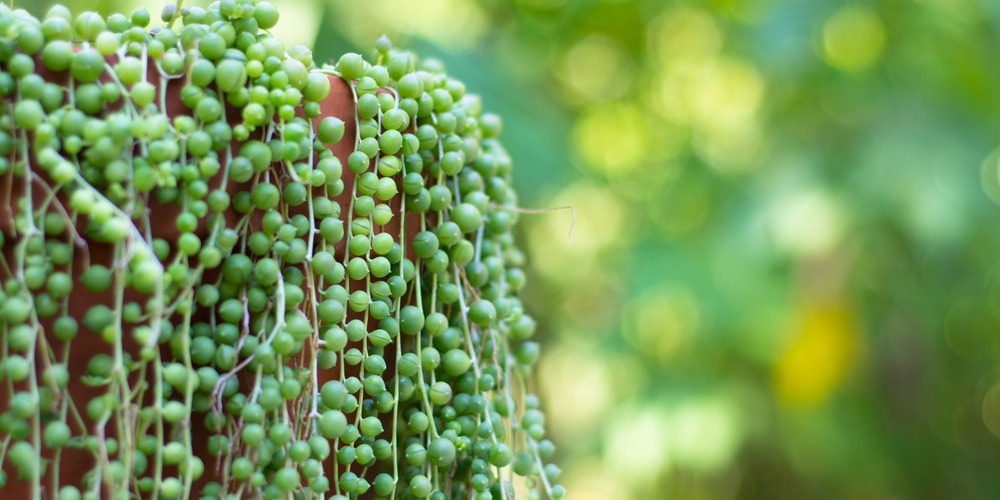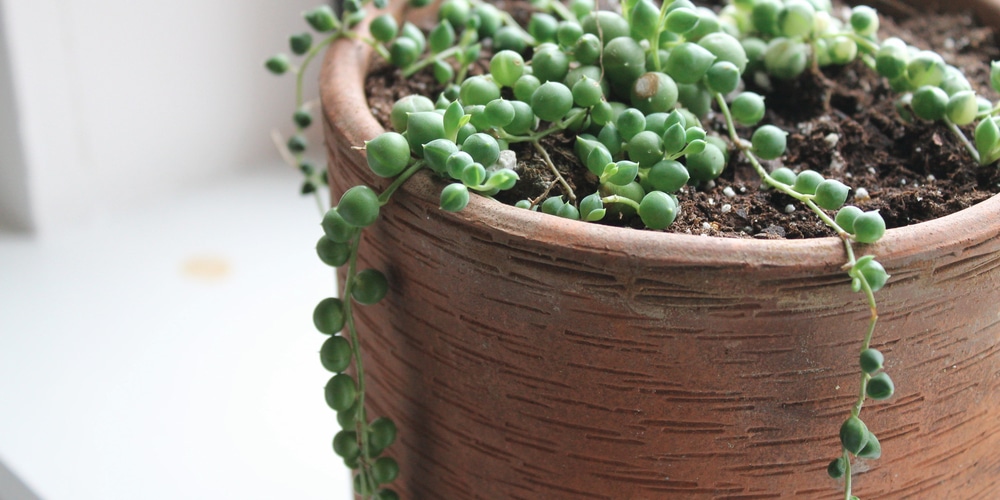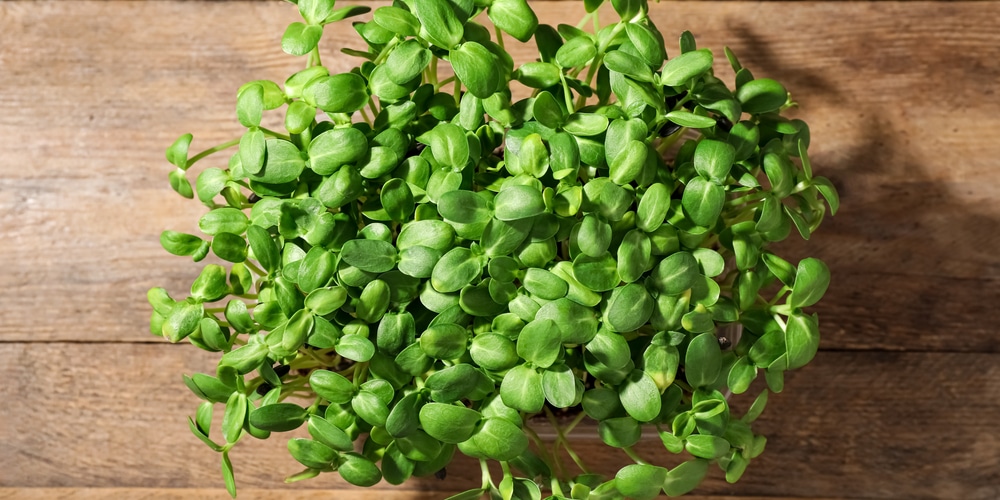The string of pearls is relatively easy to care for but needs to be watered correctly in order to thrive. If you overwater your plant, its roots could become soggy, and it may end up suffering from root rot. On the other hand, underwatering will be equally bad for your plant. Remember that succulents generally need slightly more water than cacti. Let’s look at how to tell if you have an overwatered or underwatered string of pearls plant.
String of Pearls is a lovely trailing succulent that looks excellent growing on a shelf or windowsill due to its cascading leaves. These plants are fast-growing and produce vines with pearl-like leaves.
Overwatered/underwatered string of pearls
The most important thing to get right when it comes to caring for succulents is the amount of water they receive. When a plant has been either under or over watered, it will show signs that it’s suffering.
Often, with a string of pearls plant, the symptoms are the same with over and underwatering. The only way to tell what the problem is is to ‘finger test’ your plant’s soil. Stick your finger at least two inches into the ground to test moisture levels. Whether you’ve under or overwatered your string of pearl plants, you’ll need to take action as soon as possible to revive your plant.
Symptoms of an Overwatered String of Pearls Plant
A string of Pearl plants is easy to look after as long as you get their watering requirements right. These plants are very vulnerable to overwatering and will quickly die if they have been left standing in soggy soil.
It would help if you got into the habit of testing your plant’s soil before watering. Your plant can be watered regularly, taking into account the climate in your area. Most people find that they need to water their plant every one to two weeks in the summer.
If you’ve watered your plant more than this and it has started to turn brown, you can look out for the following signs of overwatering.
Rotten Roots
Root rot occurs in plants that have been in soggy soil for extended periods. If your plant’s soil feels very soggy, you can remove it from its pot and examine the roots. Roots that are rotten will look black or brown and feel soggy. You may also notice a foul odor.
Soft leaves
If you’ve overwatered a string of pearls, the leaves will look soft and have a shriveled appearance. The leaves may also have water blisters and will feel mushy to the touch. Some of the foliage may even have burst.
Brown Leaves
One of the first things plant owners will notice when their string of pearls becomes waterlogged is that the leaves will begin to turn brown. If you spot the problem soon enough, the leaves may appear yellowish; browning is the next stage.
How to fix an overwatered string of pearls?
If your string of pearls plant has been overwatered, you’ll need to act fast to be in with a chance of saving your plant. The first thing to do is to lay some newspaper on your work surface. This will help soak up the excess water when you remove the plant from its pot.
Remove as much soil as you can from around your string of jade plants roots. This allows you to examine the roots. Healthy roots should be firm and white in the middle. You should cut off any soggy or black roots with a sharp knife.
Next, treat your plant’s roots using a fungicide. It’s also a good idea to throw away the old soil that you’ve removed from your plant. This will be too wet to use at the moment and could spread the infection to other plants.
You can then report your plant using new soil and a new pot. Ensure you use a pot with holes in the bottom, as this will help with drainage and will stop your plant from becoming waterlogged in the future. It’s also a good idea to add a layer of stones, coconut husk, or gravel to the bottom of the pot.
Underwatered string of pearls
The symptoms of an underwatered string of pearls look very similar to an overwatered plant. The difference is that your plant will look thin or small and will appear to have shrunk. The first thing you’ll notice is that the foliage will have turned brown and will feel soft. If you touch the plant’s leaves, they will also feel very dry, and your plant will have a wilted appearance. The soil will also feel completely dry.
Your plant is most likely underwatered and dehydrated if it’s been sitting in a sunny location for too long or hasn’t be watered for a while. A string of pearls can also suffer from sunburn, which turns the foliage brown. Damage from sunburn is generally unreversible.
How to fix an underwatered string of pearls?
To revive an underwatered string of pearls, you can give its soil a good soak. To do this, you can place your plant pot in the bath or shower and soak completely. If your plants have been sitting in the sun, this may also have affected their health. Leave your plant in indirect sunlight until it revives. Once your plant has regained its health, you can develop a regular watering schedule so that it doesn’t become underwatered again.
If your string of pearls plant looks shriveled but hasn’t yet started to turn brown, it may be a good idea to increase watering slightly.
Conclusion
The String of Pearls is a lovely succulent that has trailing leaves and makes a great addition to any home or office. Ensure you get the watering right, and you’ll have a healthy, thriving plant for years to come.
String of pearls is susceptible to overwatering, which will result in root rot. Don’t let your plant sit in soggy soil, or it may die. These plants can go without water for a couple of weeks, providing they aren’t left in full sun. If your plants have been underwatered, you can give them a good soak.
Related: Pearls and Jade Pothos


